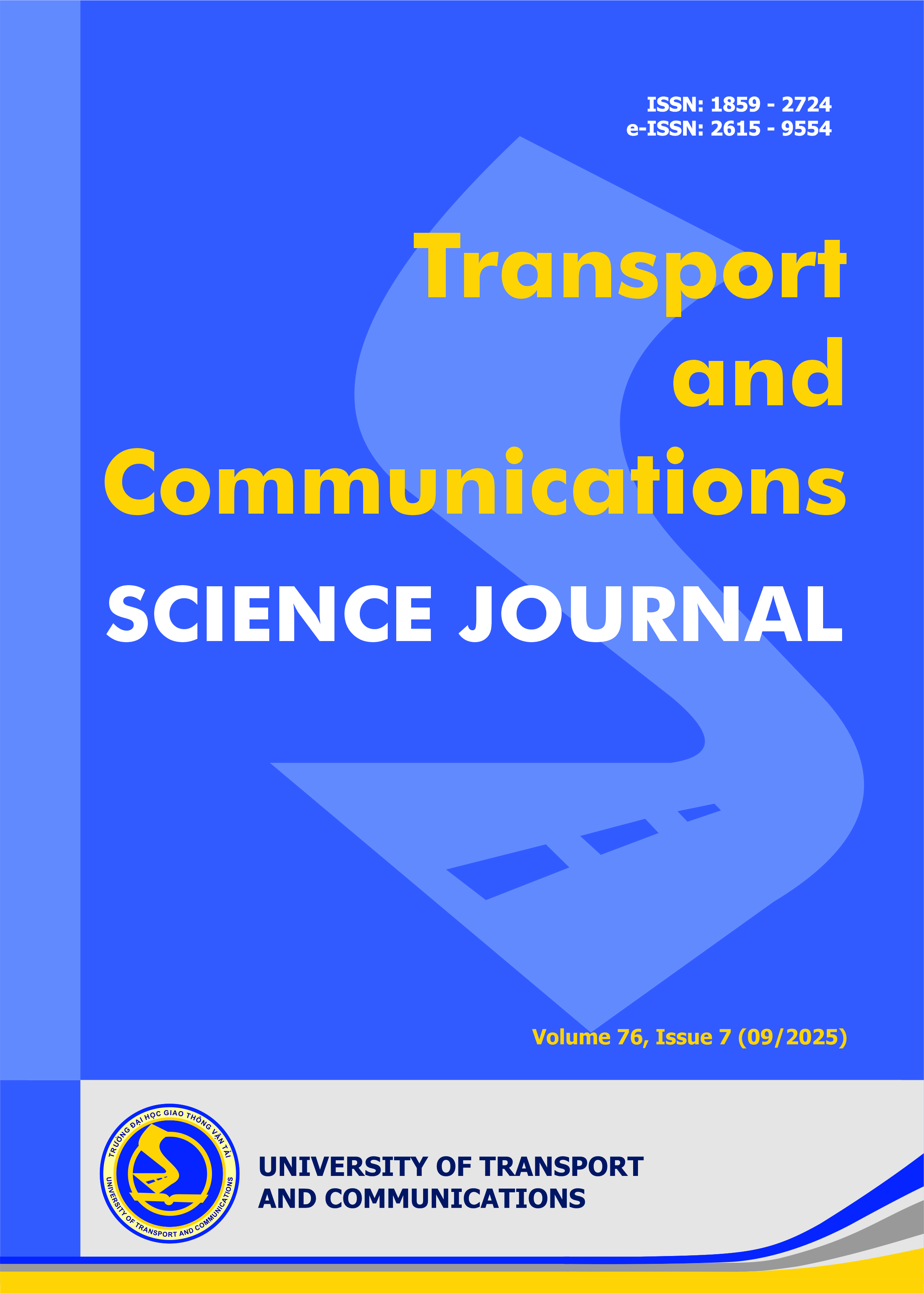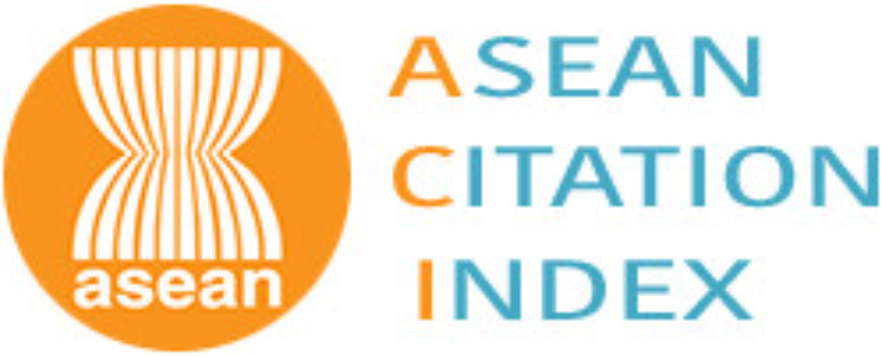Mechanical performance of roadcon-pema-sae-modified cement treated base in pavement applications
Email:
sonth@utt.edu.vn
Từ khóa:
CTB, Roadcon-PEMA-SAE, Lignosulfonate additive, Compressive strength, Splitting tensile strength, Modulus of elasticity, Regression model
Tóm tắt
Designing cement-treated base (CTB) layers that achieve required stiffness and tensile performance while reducing cement demand and life-cycle costs remains a practical and environmental imperative. Lignosulfonate-based additive offers a viable pathway, yet quantitative and transferable guidance on the trade-offs between cement and additive contents for CTB, especially in Vietnam climates, remains limited. This study investigates the enhancement of CTB using Roadcon-SAE, a lignosulfonate-based additive, for pavement base applications. The objective was to evaluate the effects of cement (3-7%) and additive (0-1%) ratios on the mechanical properties of CTB, including compressive strength (Rc), splitting tensile strength (Rst), and modulus of elasticity (E). A general full factorial experimental design was employed, with samples prepared and tested according to Vietnamese standards. Results showed that increasing cement and additive ratios significantly improved Rc, Rst, and E, with the optimal mixture (7% cement, 1% Roadcon-PEMA-SAE) achieving Rc of 13.97 MPa, Rst exceeding 0.45 MPa, and E surpassing 800 MPa, meeting requirements for flexible pavement bases. Quadratic regression models (R² > 88%) quantified the relationships between input variables and mechanical properties. A cement ratio of 3-5% and additive ratio of 0.8% were recommended for cost-effective performance. This research provides practical guidelines for optimizing CTB in road construction and highlights the efficacy of Roadcon-SAE in enhancing material propertiesTài liệu tham khảo
[1]. K.P. George, Characterization and structural design of cement-treated base, Transportation Research Record, 1288 (1990) 78-87.
[2]. K.J. Gaspard, Evaluation of Cement Treated Base Courses, Louisiana Transportation Research Center, Louisiana DOTD, Report No. 00-1TA, 2000.
[3]. South African National Roads Agency Limited (SANRAL), South African pavement engineering manual, 2014.
[4]. A. Arulrajah, J. Piratheepan, M.W. Bo, N. Sivakugan, Geotechnical characteristics of recycled crushed brick blends for pavement sub-base applications, Canadian Geotechnical Journal, 49 (2012) 796–811. https://doi.org/10.1139/T2012-041
[5]. N.T. Hiep, P.H. Khang, B.T. Thanh, Research on using dolomite aggregate as cement treated base for highway pavement construction in Ninh Binh, Vietnam, Journal of Materials and Engineering Structures, 9(2022) 485–492.
[6]. P.N. Pham, T.T.T. Tran, P. Nguyen, T.A. Truong, Rafat Siddique, Yue Liu, Yan Zhuge, Rubberized cement-stabilized aggregates: Mechanical performance, thermal properties, and effect on temperature fluctuation in road pavements, Transportation Geotechnics, 40 (2023) 100982. https://doi.org/10.1016/j.trgeo.2023.100982
[7]. S. Marik, R.R.N. Gondaimei, A. Mondal, Devendra Kumar, Characterization of cement-modified mixtures and their typical characteristics: A review, Journal of Building Engineering, 96 (2024) 110526. https://doi.org/10.1016/j.jobe.2024.110526
[8]. N.P. Mailvaganam, M.R. Rixom, D.P. Manson, C. Gonzales, Chemical Admixtures for Concrete, CRC Press, 1999.
[9]. J. Liu, C. Yu, X. Shu, Q. Ran, Y. Y.ang, Recent advance of chemical admixtures in concrete. Cement and Concrete Research, 124 (2019) 105834. https://doi.org/10.1016/j.cemconres.2019.105834
[10]. Y. Wang, L. Lei, J. Liu, Y. Ma, Y. Liu, Z. Xiao, Caijun Shi, Accelerators for normal concrete: A critical review on hydration, microstructure and properties of cement-based materials, Cement and Concrete Composites, 134 (2022) 104762. https://doi.org/10.1016/j.cemconcomp.2022.104762
[11]. D.P. Alazigha, J.S. Vinod, B. Indraratna, Ana Heitor, Potential use of lignosulfonate for expansive soil stabilisation, Environmental Geotechnics, 6 (2019) 480-488. https://doi.org/10.1680/jenge.17.00051
[12]. Supriya Marik, G. D. Ransinchung R. N, Aditya Singh, Lt. Prathmesh Khot, Laboratory study and performance evaluation of cement treated base using chemical stabiliser, Road Materials and Pavement Design, 24 (2023) 1522-1541. https://doi.org/10.1080/14680629.2022.2083660
[13]. L. Yang, E. Yilmaz, J. Li, H. Liu, H. Jiang, Effect of superplasticizer type and dosage on fluidity and strength behavior of cemented tailings backfill with different solid contents, Construction and Building Materials, 187 (2018) 290-298. https://doi.org/10.1016/j.conbuildmat.2018.07.155
[14]. N. Dharani, M.R. Nivitha, Use of polyvinyl alcohol and polyethylene glycol as self-curing agents for concrete pavement, European Journal of Environmental and Civil Engineering, 28 (2024) 2244-2264. https://doi.org/10.1080/19648189.2024.2312476
[15]. 22TCN 211-06, Flexible Pavement – Requirements and Design Guidelines, Ministry of Transport, 2006.
[16]. TCVN 8859:2023, Crushed Stone Base Layer in Road Pavement Structures: Construction and Acceptance, Ministry of Science and Technology, 2023.
[17]. TCVN 8858:2023, Cement-Stabilized Crushed Stone and Natural Aggregate Base Layers in Road Pavement Structures: Construction and Acceptance, Ministry of Science and Technology, 2023.
[18]. TCVN 2682:2009, Portland Cement: Technical Requirements, Ministry of Science and Technology, 2009.
[19]. Decision 2218/QĐ-BGTVT, Guidelines amending and supplementing certain technical provisions for the design, construction, and acceptance of cement-treated crushed stone base (CTB) layers in road pavement structures, Ministry of Transport, 2018.
[2]. K.J. Gaspard, Evaluation of Cement Treated Base Courses, Louisiana Transportation Research Center, Louisiana DOTD, Report No. 00-1TA, 2000.
[3]. South African National Roads Agency Limited (SANRAL), South African pavement engineering manual, 2014.
[4]. A. Arulrajah, J. Piratheepan, M.W. Bo, N. Sivakugan, Geotechnical characteristics of recycled crushed brick blends for pavement sub-base applications, Canadian Geotechnical Journal, 49 (2012) 796–811. https://doi.org/10.1139/T2012-041
[5]. N.T. Hiep, P.H. Khang, B.T. Thanh, Research on using dolomite aggregate as cement treated base for highway pavement construction in Ninh Binh, Vietnam, Journal of Materials and Engineering Structures, 9(2022) 485–492.
[6]. P.N. Pham, T.T.T. Tran, P. Nguyen, T.A. Truong, Rafat Siddique, Yue Liu, Yan Zhuge, Rubberized cement-stabilized aggregates: Mechanical performance, thermal properties, and effect on temperature fluctuation in road pavements, Transportation Geotechnics, 40 (2023) 100982. https://doi.org/10.1016/j.trgeo.2023.100982
[7]. S. Marik, R.R.N. Gondaimei, A. Mondal, Devendra Kumar, Characterization of cement-modified mixtures and their typical characteristics: A review, Journal of Building Engineering, 96 (2024) 110526. https://doi.org/10.1016/j.jobe.2024.110526
[8]. N.P. Mailvaganam, M.R. Rixom, D.P. Manson, C. Gonzales, Chemical Admixtures for Concrete, CRC Press, 1999.
[9]. J. Liu, C. Yu, X. Shu, Q. Ran, Y. Y.ang, Recent advance of chemical admixtures in concrete. Cement and Concrete Research, 124 (2019) 105834. https://doi.org/10.1016/j.cemconres.2019.105834
[10]. Y. Wang, L. Lei, J. Liu, Y. Ma, Y. Liu, Z. Xiao, Caijun Shi, Accelerators for normal concrete: A critical review on hydration, microstructure and properties of cement-based materials, Cement and Concrete Composites, 134 (2022) 104762. https://doi.org/10.1016/j.cemconcomp.2022.104762
[11]. D.P. Alazigha, J.S. Vinod, B. Indraratna, Ana Heitor, Potential use of lignosulfonate for expansive soil stabilisation, Environmental Geotechnics, 6 (2019) 480-488. https://doi.org/10.1680/jenge.17.00051
[12]. Supriya Marik, G. D. Ransinchung R. N, Aditya Singh, Lt. Prathmesh Khot, Laboratory study and performance evaluation of cement treated base using chemical stabiliser, Road Materials and Pavement Design, 24 (2023) 1522-1541. https://doi.org/10.1080/14680629.2022.2083660
[13]. L. Yang, E. Yilmaz, J. Li, H. Liu, H. Jiang, Effect of superplasticizer type and dosage on fluidity and strength behavior of cemented tailings backfill with different solid contents, Construction and Building Materials, 187 (2018) 290-298. https://doi.org/10.1016/j.conbuildmat.2018.07.155
[14]. N. Dharani, M.R. Nivitha, Use of polyvinyl alcohol and polyethylene glycol as self-curing agents for concrete pavement, European Journal of Environmental and Civil Engineering, 28 (2024) 2244-2264. https://doi.org/10.1080/19648189.2024.2312476
[15]. 22TCN 211-06, Flexible Pavement – Requirements and Design Guidelines, Ministry of Transport, 2006.
[16]. TCVN 8859:2023, Crushed Stone Base Layer in Road Pavement Structures: Construction and Acceptance, Ministry of Science and Technology, 2023.
[17]. TCVN 8858:2023, Cement-Stabilized Crushed Stone and Natural Aggregate Base Layers in Road Pavement Structures: Construction and Acceptance, Ministry of Science and Technology, 2023.
[18]. TCVN 2682:2009, Portland Cement: Technical Requirements, Ministry of Science and Technology, 2009.
[19]. Decision 2218/QĐ-BGTVT, Guidelines amending and supplementing certain technical provisions for the design, construction, and acceptance of cement-treated crushed stone base (CTB) layers in road pavement structures, Ministry of Transport, 2018.
Tải xuống
Chưa có dữ liệu thống kê

Nhận bài
11/07/2025
Nhận bài sửa
25/08/2025
Chấp nhận đăng
10/09/2025
Xuất bản
15/09/2025
Chuyên mục
Công trình khoa học
Kiểu trích dẫn
Quynh Anh Bui, T., Son Hoang, T., & Viet Dung, D. (1757869200). Mechanical performance of roadcon-pema-sae-modified cement treated base in pavement applications. Tạp Chí Khoa Học Giao Thông Vận Tải, 76(7), 995-1009. https://doi.org/10.47869/tcsj.76.7.6
Số lần xem tóm tắt
81
Số lần xem bài báo
14









